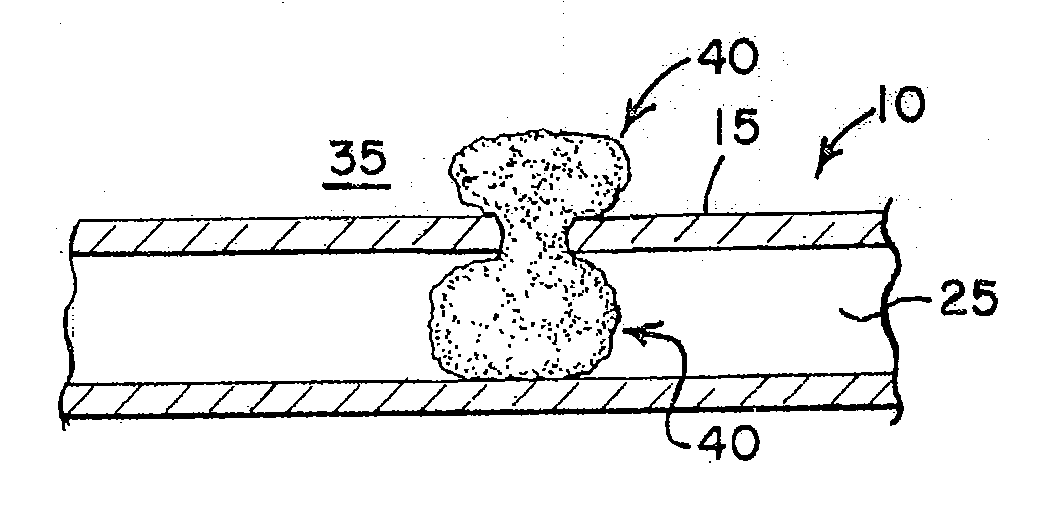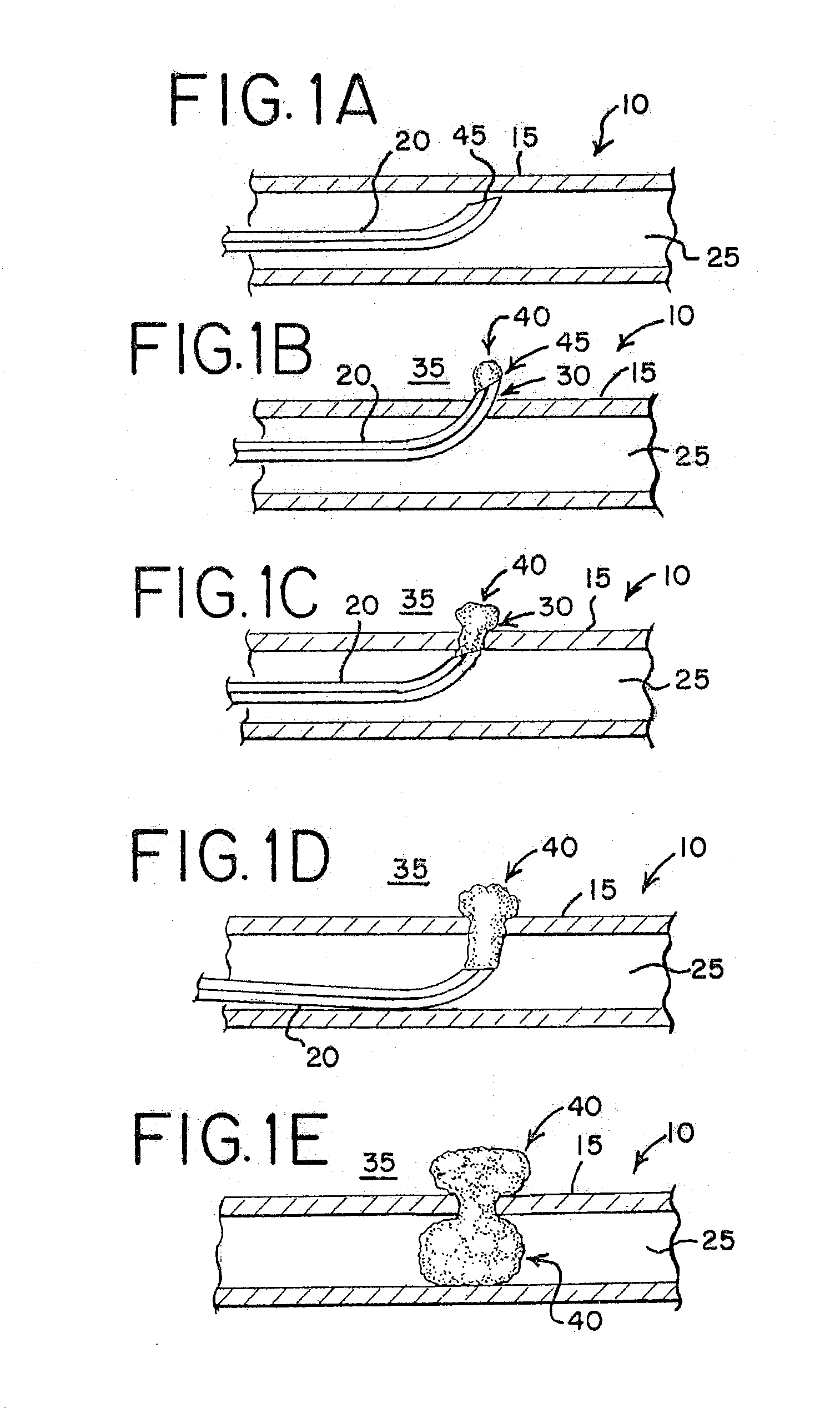Method For Anchoring Occlusion Plug
a technology of occlusion plugs and anchoring holes, which is applied in the field of methods for anchoring occlusion plugs, can solve the problems of occlusion of vessels, affecting the healing effect of wounds, so as to reduce the flow of bodily fluids and block or reduce the flow of blood
- Summary
- Abstract
- Description
- Claims
- Application Information
AI Technical Summary
Benefits of technology
Problems solved by technology
Method used
Image
Examples
Embodiment Construction
In order to provide a clear and consistent understanding of the specification and claims, the following definitions are provided.
As used herein, the term “proximal” is used in its conventional sense to refer to the end of the member (or component) that is closest to the operator during use.
The term “distal” is used in its conventional sense to refer to the end of the member (or component) that is initially inserted into the patient, or that is closest to the patient.
The term “expandable ECM material” refers to a porous ECM material composition obtained from a non-expandable ECM material treated under conditions that expand the volume of the non-expandable ECM material.
The terms “non-expandable ECM material” and “non-expandable tissue source” are used interchangeably to refer to a material composition processed from a natural ECM tissue source material, which has not been exposed to alkaline conditions, acid conditions or other conditions sufficient to substantially disrupt the colla...
PUM
 Login to View More
Login to View More Abstract
Description
Claims
Application Information
 Login to View More
Login to View More - R&D
- Intellectual Property
- Life Sciences
- Materials
- Tech Scout
- Unparalleled Data Quality
- Higher Quality Content
- 60% Fewer Hallucinations
Browse by: Latest US Patents, China's latest patents, Technical Efficacy Thesaurus, Application Domain, Technology Topic, Popular Technical Reports.
© 2025 PatSnap. All rights reserved.Legal|Privacy policy|Modern Slavery Act Transparency Statement|Sitemap|About US| Contact US: help@patsnap.com


